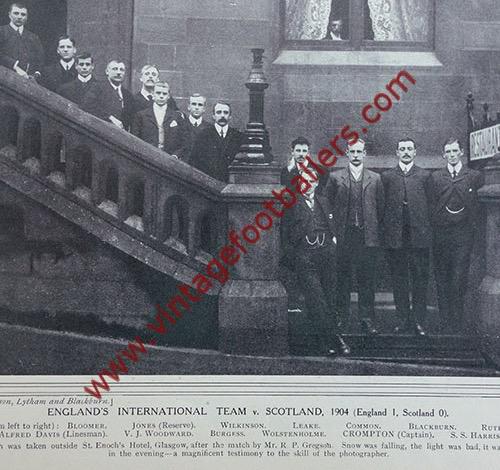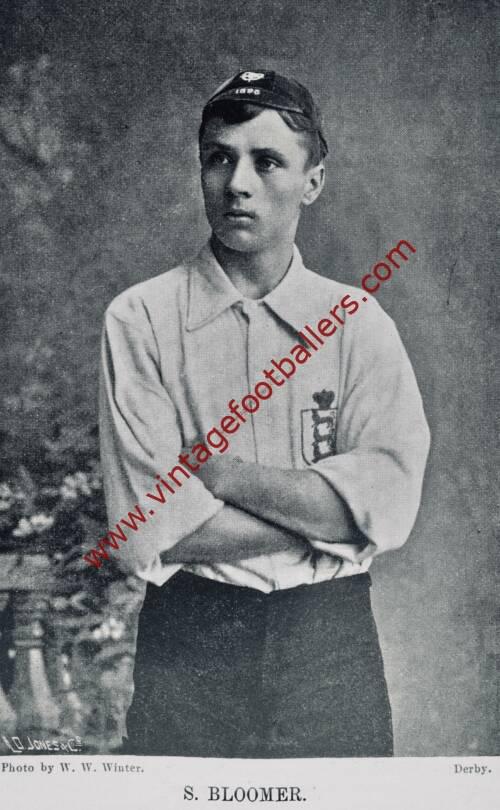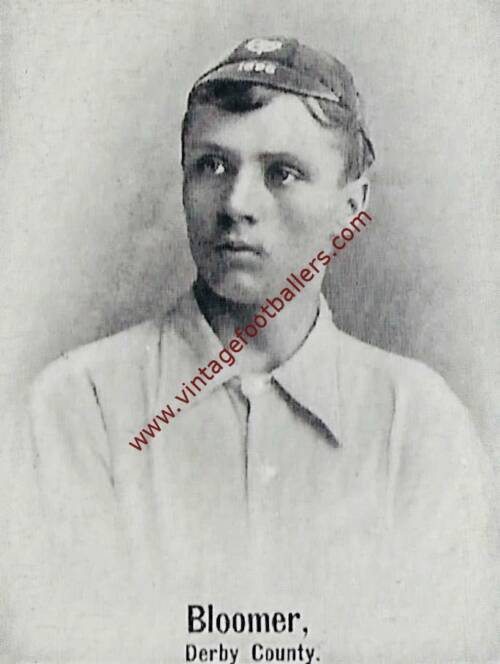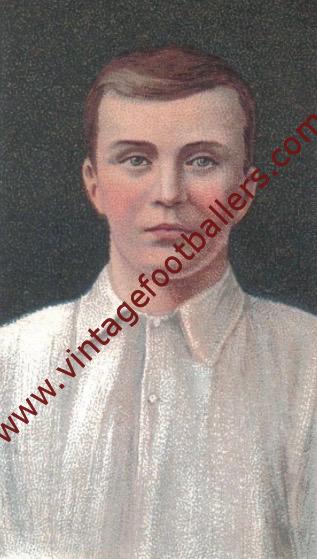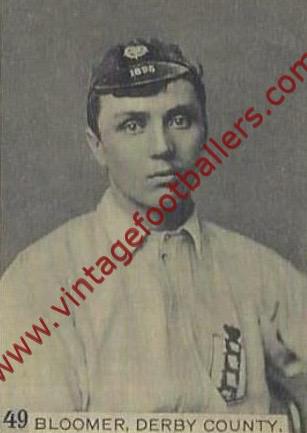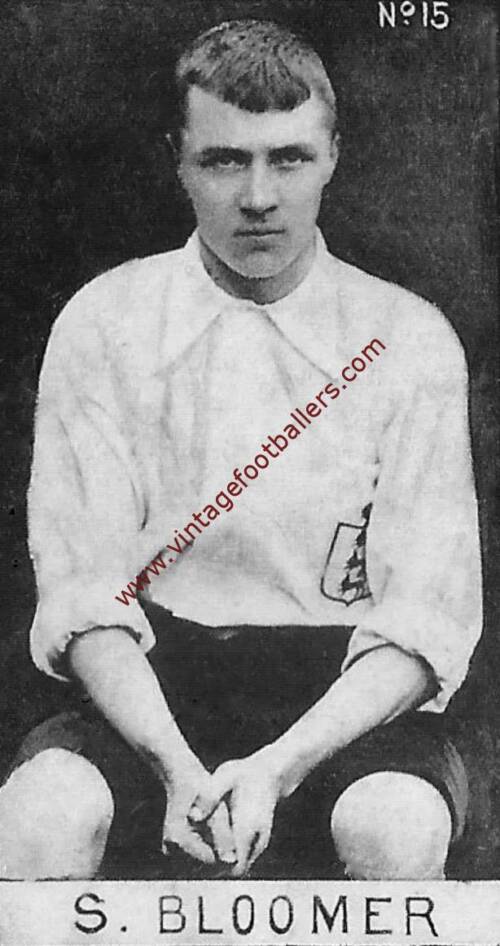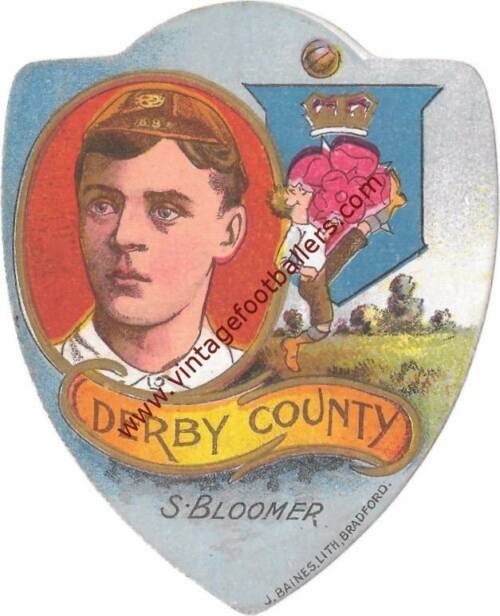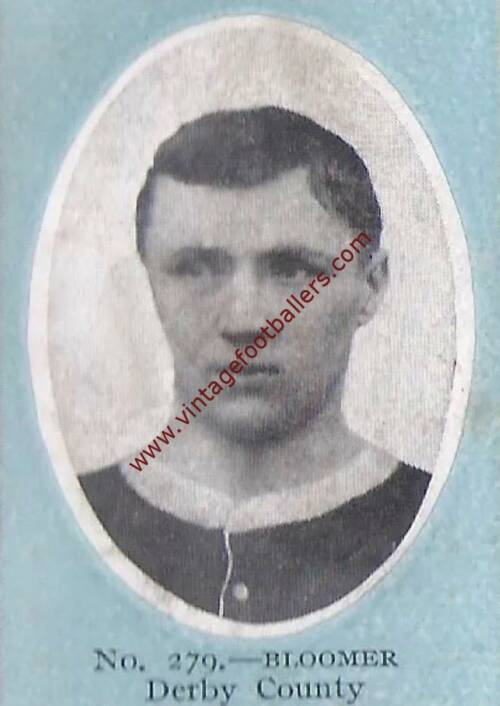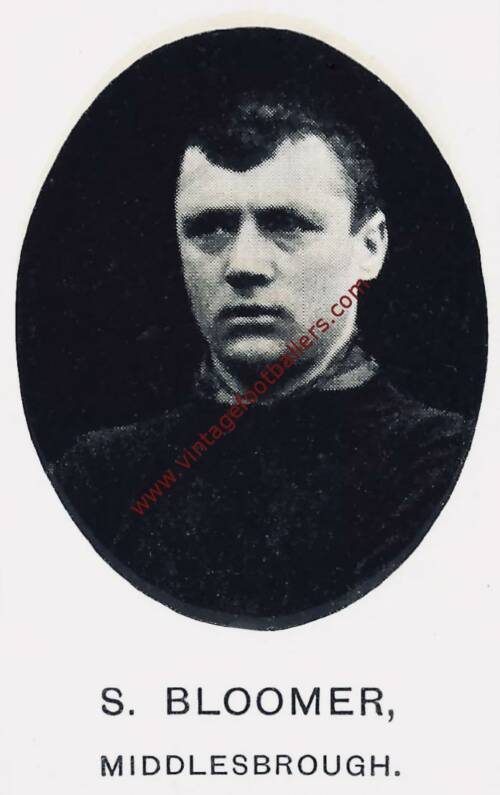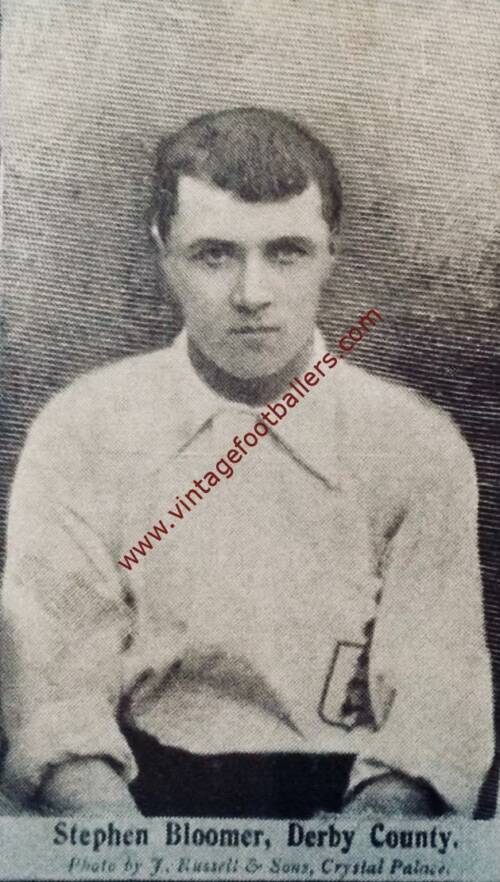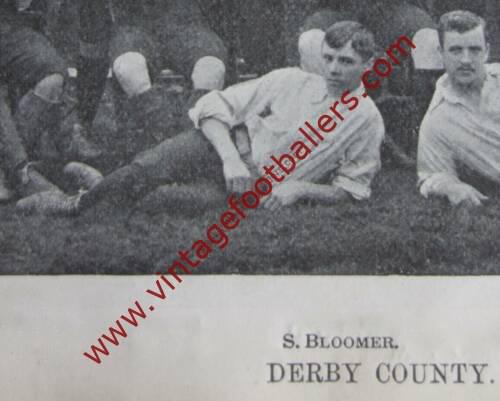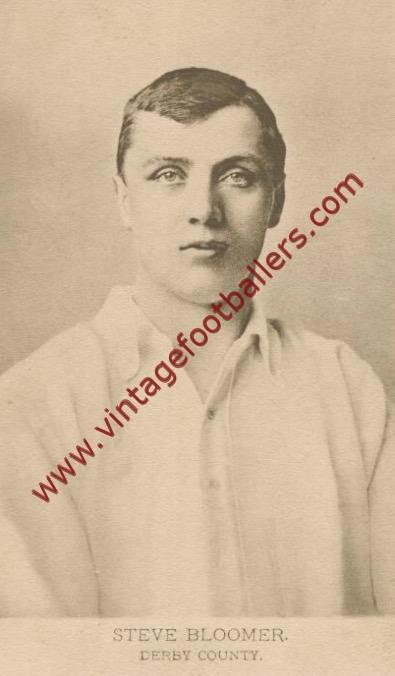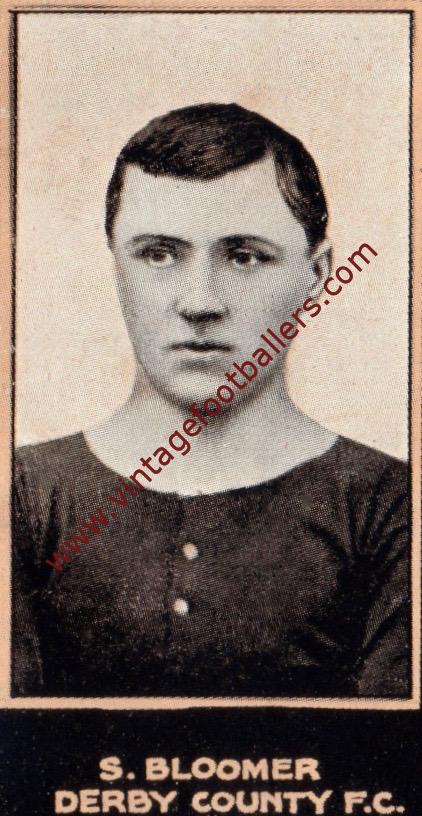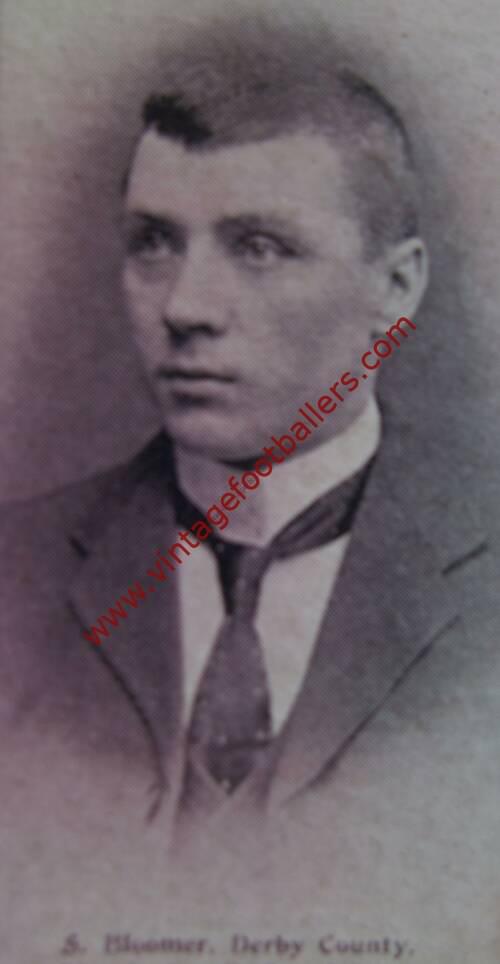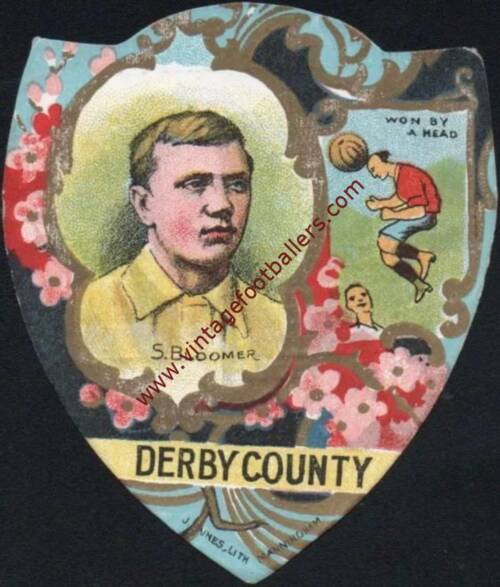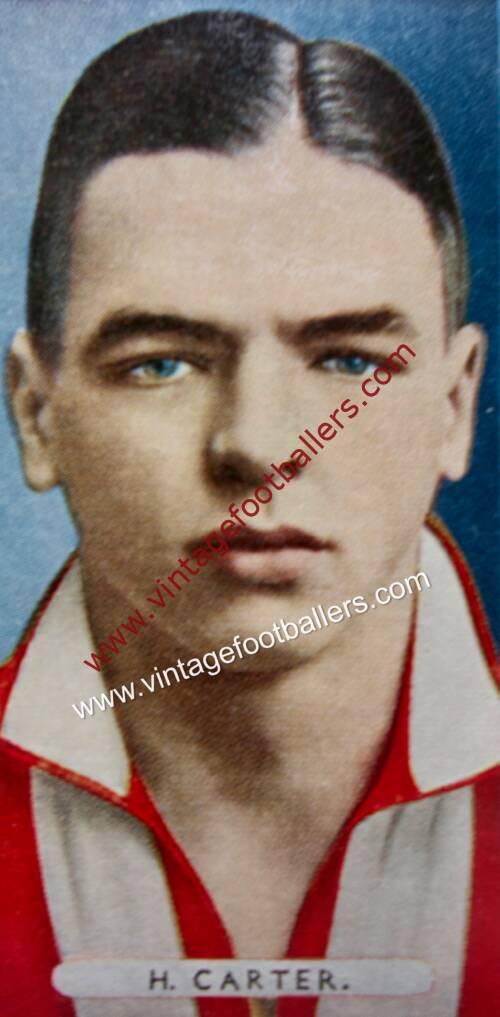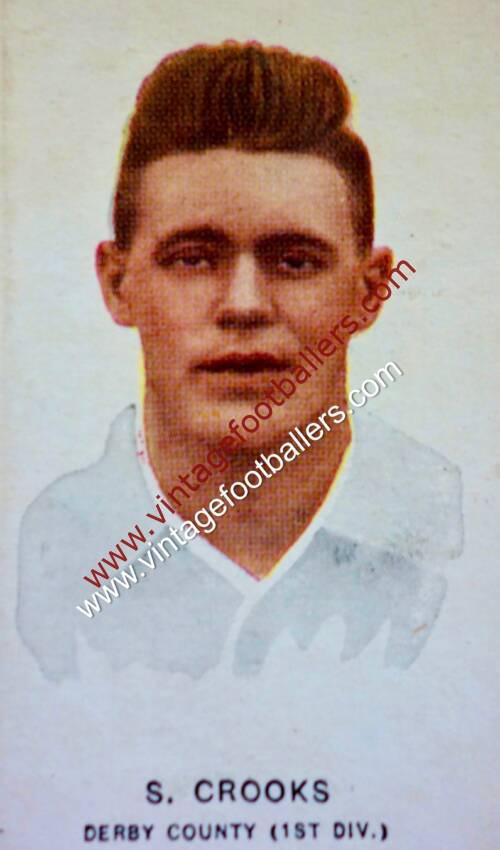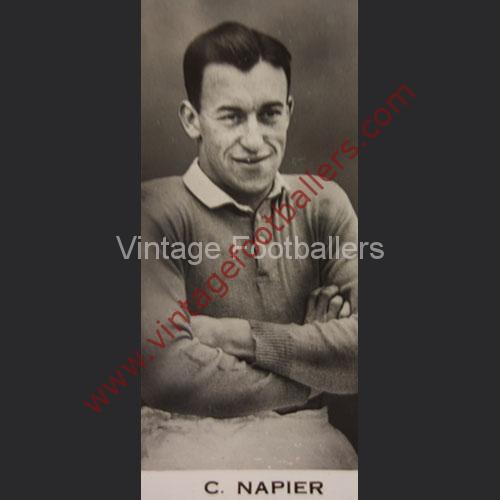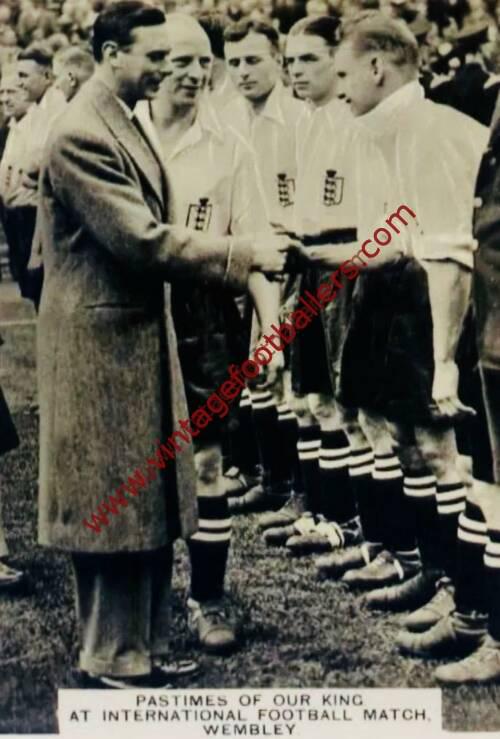Please choose your photo size from the drop down menu below.
If you wish your photo to be framed please select Yes.
Note: 16″x 20″not available in a frame.
Images can also be added to accessories. To order please follow these links
£8.95 – £49.95
Please choose your photo size from the drop down menu below.
If you wish your photo to be framed please select Yes.
Note: 16″x 20″not available in a frame.
Images can also be added to accessories. To order please follow these links
Cradley, Worcestershire born inside forward Steve Bloomer who for anyone who’s never heard of him really is one of the all time football greats, and one of the two or three biggest stars of football during three decades from the mid 1880’s through to the First World War. During his career Bloomer was a prolific goalscorer for both club and country. A quick thinking forward, he was able to shoot powerfully and accurately with either foot and his speciality was the daisy cutter – a low shot, hit with great power, speed and accuracy. In 536 First Division games he scored 317 goals and, after Jimmy Greaves, he is the second highest all-time goalscorer in the top-flight. His English League goals records of 352 was finally beaten by Dixie Dean in 1936.
He started his career with Derby Swifts in 1890 and Tutbury Hawthorn in 1891, in 1891 he appeared in the Midland League for Derby Midland, playing in a 1-1 draw with Burton Swifts on 27 March. Derby County merged with Derby Midland in 1891, and Bloomer was a Derby County player for the start of the 1891-92, the fourth season of the Football League. He chose to retain his amateur status and instead turned out for the third-team. He signed a professional contract in April 1892. The next month he signed a contract with Burton Wanderers, though the Football Association soon ruled the contract to be invalid and reprimanded the Burton official involved.
An administrative error by Derby secretary William Parker in September 1892 meant that Jimmy McLachlan and Samuel Mills were ineligible for the opening game of the 1892-93 season against Stoke at the Victoria Ground, and Bloomer was a surprise late addition to the first eleven. Bloomer later claimed he scored twice during the game, but contemporary reports instead credited two goals of the 3-1 win to Johnny McMillan. His first officially recorded goal therefore came in a 2-1 defeat to Preston North End the following week at the County Ground. He remained a key member of the first team, and was also given penalty taking duties, and finished the campaign with 11 goals from 28 matches. Veteran striker and captain John Goodall helped to improve his game, helping to improve his ball control and positional skills.
He missed seven games of the 1893-94 season after Leicester Fosse half-back Peggy Lord broke his collarbone on 10 February. Bloomer recovered and claimed 19 goals from 27 appearances during the campaign. Derby struggled during the 1894-95 campaign, and Bloomer was limited to 10 goals in 29 league games as County finished in 15th place and forced to play a test match against Notts County at Filbert Street to retain their First Division status. County were leading 1-0 with seven minutes to go, but goals from Goodall and Bloomer gave County the win.
Bloomer opened the 1895-96 season by scoring both goals in a 2-0 win over Sunderland in the club’s new permanent home at the Baseball Ground (the club had actually already played two first team games at the ground in 1892 due to scheduling conflicts at the County Ground). Derby finished the season in second-place behind Aston Villa and exited the FA Cup at the semi-finals after losing 2–1 to Wolverhampton Wanderers. While at Derby he was top scorer in the First Division on five occasions in 1896, 1897, 1899, 1901 and 1904. In 1896, together with John Campbell of Aston Villa. He was also the leading “Rams” scorer for 14 consecutive seasons and scored 17 hat-tricks in the league. One of his best seasons came in 1896-97 when he scored 31 goals, including five hat-tricks, in 33 League and FA Cup games. Between 14 November 1896 and 5 April 1897 he scored 21 goals in 20 games. He also scored six goals for the club in a game against Sheffield Wednesday in January 1899.
Bloomer’s goals helped Derby finish runners-up in the First Division in 1896 and helped them reach three FA Cup finals in 1898, 1899 and 1903. He scored in the 1898 final, a 3-1 defeat to Nottingham Forest. On 3rd September 1900 Bloomer scored the first-ever goal at The Hawthorns, the 1-1 draw against West Bromwich Albion being the first match played at the ground.
In March 1906 Bloomer joined Middlesbrough for a fee of £750. Among team mates at his new club were Alf Common, the first £1,000 footballer, and Fred Pentland. He was top-scorer at Middlesbrough in both the 1906-07 and 1907-08 seasons. He also scored four goals in a game against Woolwich Arsenal on 5th January 1907. After four years at Middlesbrough he returned to the Rams in the summer of 1910 and helped them win the Second Division title in 1912, scoring 18 goals in the 1911–12 campaign. He scored his last league goal for Derby against Sheffield United on 6 September 1913 and his last match was against Burnley on 31 January 1914 when he was 40 years and 11 days.
Bloomer made his England debut on 3rd March 1895, scoring twice in a 9-0 win against Ireland. He scored in all his first 10 international appearances, which remains a record for number of consecutive scoring appearances. He netted 19 times during these games. On 16th March 1896 Bloomer scored 5 goals for England against Wales and on 18th March 1901 he scored four goals against the same opposition. Bloomer thus became the first player to score two hat-tricks for England and was also the first to score four goals for England twice. He eventually finished his international career with 28 goals in 23 international appearances. He was England’s captain for the abandoned Ibrox Disaster match against Scotland in April 1902 when 25 people died when part of the terracing collapsed, and he captained, for the only time in his England career, a month later when the match was re-played, a 2-2 draw at Villa Park. Bloomer helped England win the British Home Championship eight times. He held the overall England scoring record from April 1898 when he surpassed Tinsley Lindley’s total of 14 with two goals against Scotland, until his final tally of 28 was overhauled by Vivian Woodward in 1911. He also played 15 times for The Football League.
Bloomer also played baseball for Derby County Baseball Club and helped them become British champions three times in the 1890s. He also played cricket at an amateur level. After retiring as a footballer he became a coach and worked with clubs in Germany, the Netherlands and Spain. During the World War I he was interned at Ruhleben, a civilian detention camp. The highlight of his coaching career came in 1924 when he guided Real Unión to victory in the Copa del Rey. After returning to England he served as player-coach with Derby Reserves, worked as a newspaper columnist and as a groundsman at the Baseball Ground, a position he held until he died in 1938.
Bloomer’s brother, Philip also briefly played for Derby County. However he only played one first team game and died of peritonitis in May 1896. His daughter Hetty, married Alf Quantrill, who played for Derby County and England as an outside-left. Bloomer’s nephew was Ted Measures who signed for Arsenal in 1932.
He remains a legend at Derby County and the club anthem Steve Bloomer’s Watchin’ is played at every Derby home game and there is a bust of him at The iPro Stadium. He is also listed in the Football League 100 Legends and English Football Hall of Fame.
| Weight | N/A |
|---|
